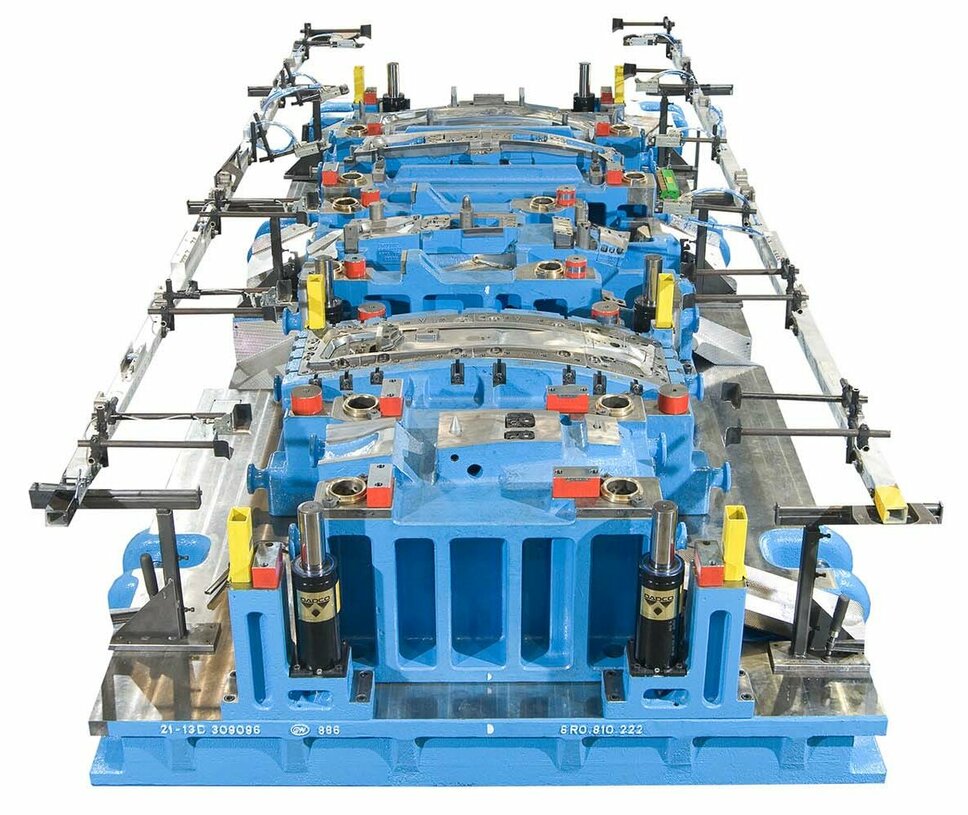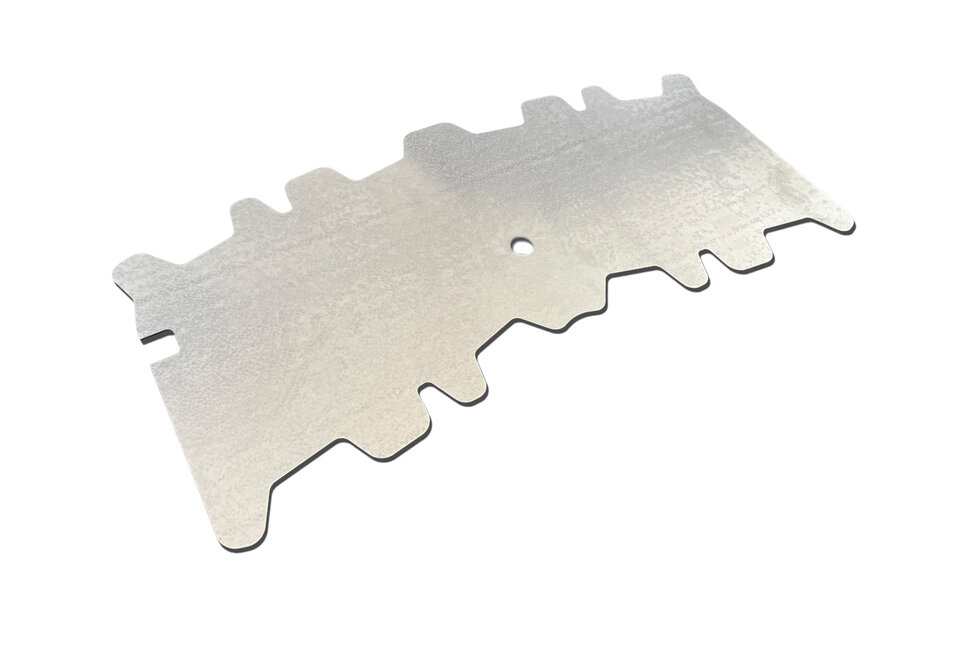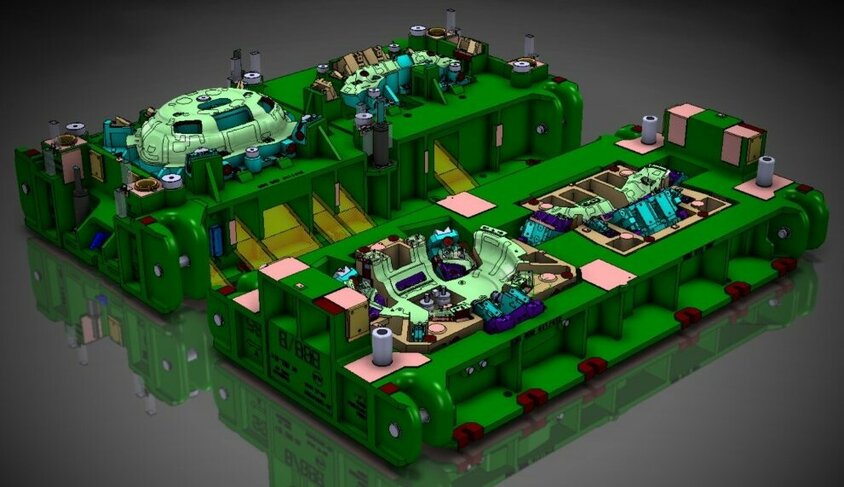Cold Forming
PRECISE COLD FORMING FOR HIGH-STRENGTH STEELS
Short lead times and high precision are the pillars upon which our success in cold forming technology rests. We specialize in the development and manufacturing of stamping and pressing tools for high-strength and ultra-high-strength steels used in demanding structural parts of a vehicle. Our expertise guarantees our partners a mature tool range consisting of line and transfer tools, supported by fully automated gripper and robot handling.
Our expertise in cold forming
Line and Transfer Tools: Maximum Efficiency and Durability of Your Tools
In cold forming, we specialize in developing complex stamping and forming tools designed for high-strength materials and high production speeds. With our expertise in cold forming, method planning, and strength analysis, combined with the use of highly wear-resistant materials, we guarantee exceptional durability and process reliability of our tools. To increase output, we also produce transfer and line tools in multiple configurations, sometimes for different components. Each tool is a testament to our commitment to quality and efficiency, tailored to meet your demanding requirements in cold forming.
Additional Technologies in our Cold Forming Tools:
- Insertion of Threaded Inserts
- Flanging
- Rolling
Economic Production of Blank Cuts through Standardization
In the manufacturing of our high-precision blank cutting tools, we focus on top quality and maximum resource efficiency to ensure your production runs smoothly and efficiently. Our expertise in cold forming extends to standardized blank cutting production, allowing us to manufacture them cost-effectively without compromising on quality or material utilization.
Proven Expertise in Cold Forming
FAQs on Cold Forming
Cold forming refers to a metalworking process where metal parts are shaped without heating, specifically below the recrystallization temperature. By applying large forming forces through methods such as pressing, bending, or stamping, the metal is molded into the desired shape without the need for extreme temperatures.
Hot forming and cold forming are both metalworking processes used to shape metal parts. The main difference lies in the working temperature of the metal during the forming process, which significantly affects the properties of the final product and the production method.
Hot forming:
- Temperature: The metal is heated above its recrystallization temperature.
- Properties: Heating softens the metal, making it easier to form complex or larger parts, and reduces tool wear.
Cold forming:
- Temperature: The metal remains at or near room temperature.
- Properties: The absence of heat makes the material harder and stronger (strain hardening), but also more brittle. Accuracy and surface finish are often better in cold forming.
During cold forming, metal or another material is deformed at room temperature into a new shape without melting it. This technique takes advantage of the fact that metals are often more ductile at normal temperatures, allowing for easier shaping without losing their fundamental structure. The process typically requires significant pressure through methods like pressing or rolling to achieve the desired form.
Deep drawing is a cold forming process in which a sheet metal is drawn into a deep, three-dimensional shape, often used for manufacturing body parts.
- Material Preparation: A flat sheet, known as a blank, is used as the starting material.
- Sheet Placement: The sheet is placed on the deep drawing press and held in place by a hold-down to keep it flat and stable.
- Shaping with the Punch: A punch, shaped like the desired end product, presses down on the sheet, pushing it into a die below.
- Forming: The material is pulled into the new shape through pressure and mechanical tension, with the hold-down preventing wrinkling.
- Finishing: The part can be further processed, such as trimming edges or refining the shape.
- Removal of the Finished Part: The finished piece is removed from the press, and the process can be repeated for the next blank.
Strain hardening describes the increase in a metal's strength through plastic deformation at room temperature. This occurs through methods such as rolling, drawing, pressing, or hammering, which deform the metal. During processing, the metal's crystal lattice structures are distorted, creating dislocations in the material. These dislocations enhance the metal's strength and hardness while making it less ductile and flexible. The strain hardening process is often used to improve the mechanical properties of a material without resorting to heat treatments, which is particularly useful in applications requiring higher strength without altering other properties.



